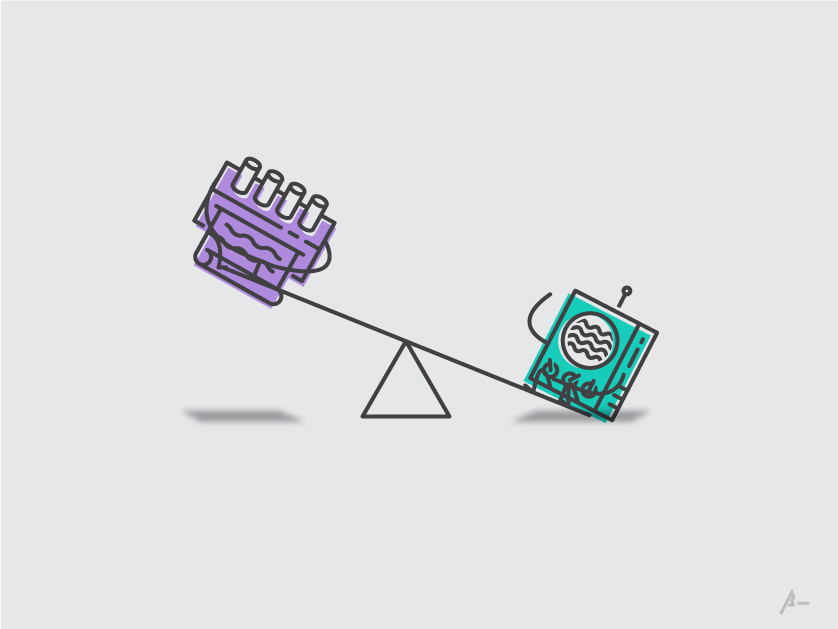Let’s Talk UI and UX in 2025: Still Sexy, But Smarter
In 2025, UI and UX aren’t just design buzzwords anymore they’re make-or-break elements of any digital product. With the ever-evolving expectations of users and the rise of advanced design systems, the standards have been raised. We’re now talking about context-aware interfaces, AI-enhanced user flows, voice-activated interactions, ultra-personalized experiences, and dark mode that actually makes sense. Custom software development across the globe has embraced these trends, combining aesthetic brilliance with functional genius. But still, at the heart of all this technical evolution lies one core principle: build something that’s not just good-looking, but also feels right to use.
Let’s take a stroll down the pixelated lane and talk UI and UX, in a way that feels more like hanging out with your designer friend over coffee (or a coding session with lo-fi beats) than reading a dry design manual.
UI Designers: The Good-Looking Architects
Since the dawn of humanity, we’ve been tweaking our tools to make them easier to use. We mod, we hack, we adapt. Just like how your ex “adapted” right out of your life, because let’s face it, you didn’t have great UX.
UI designers, bless their vibrant souls, are the magicians behind the look of your favorite digital products. They design slick, sexy interfaces, the kind that make you go, “Whoa!” at first glance. They obsess over margins, spacing, color palettes, typography, and micro-interactions. Every pixel matters. The screen? A canvas. The button? A masterpiece.
But here’s the thing. UI designers are usually more interested in what users see rather than how they feel or interact. They’re like the fashion stylists of software, concerned with how it looks on the outside. Your app could look like the next design award winner, but if it feels like navigating a minefield, the user’s going to bounce faster than a bad date.
Their job is to keep everything visually consistent. A cohesive style guide? You bet. A polished look across every screen? Absolutely. But once you start clicking around and diving deep, that’s when you’ll notice whether someone actually thought about the flow. That’s where our next hero enters the chat.
UX Designers: The Empaths of the Digital World
UX designers are the heart and soul of the digital experience. They care. Maybe too much. They care about how people think, behave, and struggle when they interact with your app or website. They don’t just sketch out wireframes, they walk in the shoes of your users, trip over the same frustrations, and then redesign the shoes to fit better.
UX in 2025 goes beyond smooth navigation and logical flows. It’s about accessibility, emotional engagement, data-driven personalization, and inclusive design. From optimizing voice navigation for visually impaired users to considering haptic feedback in mobile apps, modern UX is layered and deeply human.
UX designers test. Then they test some more. They iterate, refine, and lose sleep over whether a tooltip is too aggressive or a form field is too long. And guess what? There’s rarely one right answer. What works for a Gen Z user in Cebu might frustrate a Boomer in Denver. That’s the thrilling (and maddening) part of UX design, it’s fluid.
Why You Need Both: Beauty and Brains
Picture this: you stumble across a jaw-dropping website. The animations? Smooth. The colors? Chef’s kiss. You start to read… and then the site scrolls sideways. Paragraph after paragraph forces you to zig-zag like you’re playing a browser version of Tetris. That’s a beautiful disaster. That’s UI without UX.
Or imagine you’re checking Facebook (yes, still a thing), and every post, comment, and ad is in the same black-and-white font. Same size. Same weight. It’s like reading a dystopian novel designed by a robot with no soul.
Or you open your favorite torrent client (don’t lie), and you can’t find that one movie because there’s no search or filter. The UI might be fine, but the UX is a mess. Welcome to frustration city.
This is why UI and UX must hold hands. A gorgeous UI without a thoughtful UX is like dressing up for a date and forgetting how to talk. Likewise, a brilliant UX with no visual flair might work, but it won’t captivate.
According to Kujala’s study in Interacting with Computers, long-term satisfaction hinges not only on functionality but also on the delight of interaction. Translation: it’s not just about getting the job done, but how you feel while doing it.
Iteration Nation: Design is Never Done
So, you launch your digital masterpiece. It’s live. Users flood in. Some love it. Others… not so much. Some find new, creative ways to use your product. Others request features you never considered.
This is the reality of product design. UX is never finished. The data, feedback, and user behaviors you collect post-launch are pure gold. This is what fuels product evolution, where both UI and UX must continuously adapt.
Design is not a one-off. It’s a living, breathing process. You don’t just stop at a beautiful UI or a functional UX. You refine, you retest, you rebuild.
A Personal Experience: Enter Chromedia
Before joining Chromedia, I thought web design was pretty basic. Header, nav bar, content, footer. Done. But boy, was I wrong.
At Chromedia, where we specialize in custom software development in the Philippines, I learned the golden rule of design: consistency is everything. Not just visual consistency, but functional and experiential as well. At Cruisebound, design goes beyond looking good, it’s about creating a seamless experience that makes every interaction intuitive and meaningful
It’s easy to cram everything into a layout. It’s harder to strip away what isn’t essential. That’s where the “less is more” philosophy hits differently. A clean interface helps users focus. It doesn’t overwhelm them. Good design doesn’t scream, it whispers clarity.
Whitespace? Yeah, that boring empty space? It’s actually a superhero. It gives content room to breathe. It draws attention to what matters. It tells your brain, “This is important.”
The User Comes First. Always.
One of the most humbling lessons I’ve learned is this: you’re not designing for yourself. You’re designing for someone who’s probably distracted, impatient, and has better things to do. Designing with a “User First” mindset means every button, every transition, every scroll must serve a purpose. You’re solving a problem, not just showing off your Figma skills.
And responsiveness? That’s non-negotiable in 2025. Whether someone’s browsing your app on a 4K monitor, an iPhone, or a foldable device that didn’t exist last year, your design has to flex, adjust, and remain coherent.
Responsive design isn’t just about resizing. It’s about rethinking. It’s about knowing that what works beautifully on desktop might fall apart on mobile if you’re not careful. It’s about embracing design systems and fluid grids that make adaptation natural. That’s we use technology stack to build interfaces that respond intelligently across devices.
Web Design is Evolving, So Should You
The UI/UX landscape is changing fast. Yesterday’s trends are today’s clichés. What wowed users in 2020 now feels outdated. We now live in an era of micro-personalization, voice UI, AI-integrated support, immersive animations, and data-driven design decisions. Your digital product has to do more than look good, it has to feel right, work intuitively, and evolve with your users.
Design is not just what you see. It’s what you do and how you feel doing it.
So keep sketching, keep building, keep listening. Whether you’re working on a custom app for fintech, healthcare, or e-commerce, remember that both UI and UX are your co-pilots. And in 2025, the best digital experiences will come from teams who know how to balance both art and science.
Now get out there and make something users won’t just tolerate, but love.
Curious about how we bring thoughtful design into real work?
Check out our project portfolio, including partnership with Cruisebound. You can also read our tips on ensuring top-quality developers or prepare with our guide on critical preparations before offshoring. Lastly, explore our clutch profile to see why clients love working with Chromedia.





